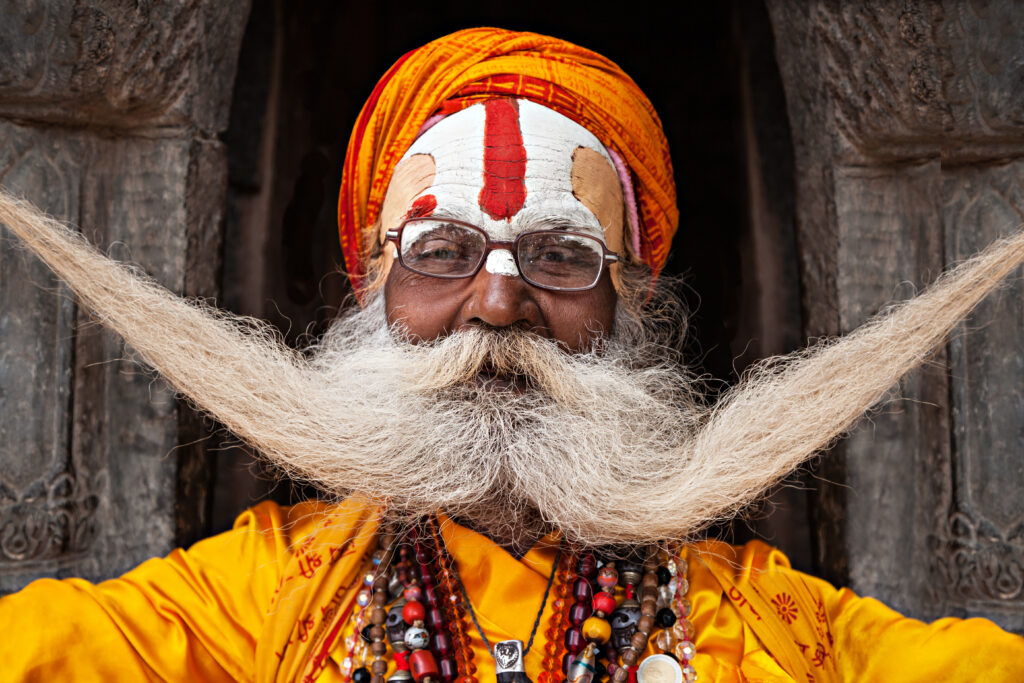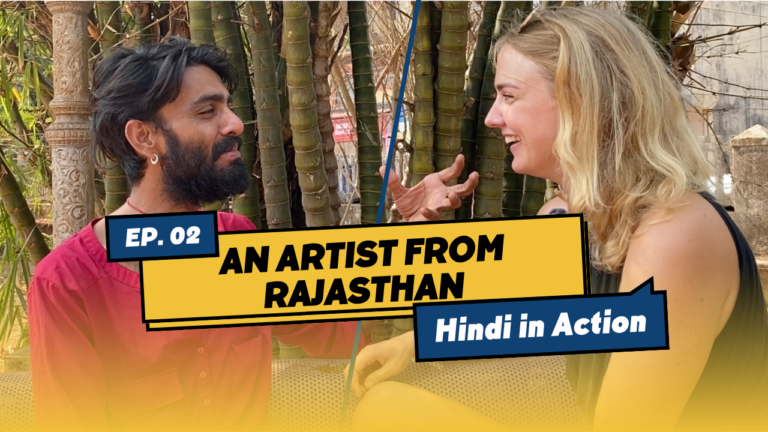Arriving in India feels like stepping into an entirely different world. The sounds are louder, more layered than what you’re used to. Colors burst from every corner around you. And a new language wraps itself around everything, unfamiliar yet rhythmic.
The Power of Untranslatable Hindi Words
I first came to Rishikesh, where Hindi is spoken everywhere. But even when people spoke to me in English, certain words stayed in Hindi. Not because they were mixing languages playfully – like the Hinglish you might hear in Bollywood dialogues – but because these were untranslatable Hindi words, deeply rooted in culture. Words like puja, prasad, atma, or karma don’t have real English equivalents without losing their essence.
Sanskrit Roots and Cultural Weight
These words often come from Sanskrit — the ancient language that still quietly shapes many modern Indian languages today, including Hindi, Tamil, Telugu, Malayalam, Bengali, and others. While their pronunciation might differ across regions, their spiritual meaning and cultural weight often remain intact.
Just like the word yoga, which is rarely translated, many of these Hindi spiritual terms are used as-is, even when people switch to English.
If you’ve read our previous blog post “Where to Stay in Rishikesh: A Guide”, you might have noticed that we used similar untranslatable words there. Because these words are so unique and full of cultural meaning, we decided to write this article to explain 13 Hindi words that don’t have a real English translation.
Imagine This...
You arrive in a new city and meet a local friend. He says:
If you haven’t been to India before, that kind of conversation might leave you puzzled.
That’s why we created this list of 13 untranslatable Hindi words to help travellers understand the spiritual language woven into daily life.
13 Untranslatable Hindi Words Every Traveler Should Know
For travelers visiting temples, ashrams, or attending Hindu spiritual gatherings, knowing these terms will help you connect more deeply with the practices, rituals, and people you encounter along the way.
1.
Kirtan (from Sanskrit कीर्तन – “repetition, telling”)
It is a form of spiritual practice in Hinduism. It involves the collective singing of the names and glories of the divine. The songs may include lists of deities’ names or tell stories expressing love and devotion toward them. Repeating divine names helps calm the mind and enter a quiet, meditative state.
One of the most famous kirtan performers is Krishna Das, who introduced many people to India’s spiritual culture. A well-known line heard around the world in kirtan is: “Hare Krishna, Hare Krishna, Hare Ram, Hare Ram…”
2.
It is an offering made to a deity or saint during a ceremony or act of worship. It usually includes sweets, fruits, or valuable items. People believe that the deity accepts the offering, blesses it, and then returns it. Devotees eat or share this sacred food as a symbol of receiving divine grace – also known as darshan.
3.
Puja (from Sanskrit पूजा – “reverence, honor”)
It is a ritual of reverence and worship in Hinduism. It can be performed daily at home, during temple ceremonies led by priests, or at annual festivals. The object of worship is usually a god, but puja can also honor a teacher, a saint, a relative, animals, or even inanimate objects. The heart of puja is building a connection with the divine and showing love and devotion.

4.
It is a complex word that usually means a sacred meeting or blessing from a holy person or deity. It refers to the connection between devotee and God. Sometimes, darshan is also used to describe receiving blessed food, like prasad, during a temple visit.
5.
It refers to a statue or icon representing a deity or saint. Murtis are carved from stone, wood, metal, or clay. Although they are physical objects, they are treated with reverence as the living presence of the divine during worship.
6.
It is a priest who performs puja and temple ceremonies. Often from the Brahmin caste, pandits are trained from childhood in Vedic texts and Hindu philosophy. They are spiritual guides and keepers of sacred traditions.
7.
Ashram (from Sanskrit: श्रम – “hard work”)
It is a spiritual retreat or monastery in Hinduism. It is often located away from cities and villages to support a peaceful environment for spiritual practice. An ashram is usually led by a guru (spiritual teacher) and is a place for learning, meditation, and devotion.
8.
It is a wandering monk or spiritual seeker who has renounced material life for the sake of spiritual freedom. Sadhus live very simply, often walking long distances or staying in caves, ashrams, or even in the open air. You can recognize them by their clothing – many wear dhoti (a cloth wrapped around the waist).

9.
Mantra (from Sanskrit “instrument of thought”)
It is a sequence of sounds or words believed to hold spiritual, mystical, or sacred power. Mantras are used in meditation, prayer, and rituals to focus the mind and connect with the divine. Some are short — like the single syllable “Om” — and others are longer texts from ancient scriptures like the Vedas.
10.
Satsang (from Sanskrit “the association of the true”)
It comes from “sat” (truth) and “sang” (company, gathering). A satsang can involve group meditation, singing mantras, listening to a teacher’s talk, or studying spiritual texts. These gatherings are a way for seekers to grow together in understanding.
11.
Seva (from Sanskrit: सप् – “to follow, serve, love”)
It means selfless service. It is doing good for others without expecting anything in return. In Hinduism, seva is considered a path of spiritual practice, especially in karma yoga — the yoga of action. Seva can include helping individuals, parents, communities, animals, or nature. One big form of seva in India called Bhandara, when temples serve free meals to anyone in need.
12.
Mandir (from Sanskrit: मन्द – “to stand still”)
It is a temple or sacred space where worship and rituals take place. It is considered the house of the divine. Each religion has its own temple style, but in Hinduism, temples are built according to ancient Vedic guidelines. Every part of the temple – from layout to statues – has symbolic meaning and follows sacred geometry.
13.
It is a title used to refer to God in Hinduism. In the Vaishnav tradition, Bhagwan is seen as the ultimate creator and protector, the one people seek to reunite with.
“He who understands creation and destruction, the coming and going of beings, wisdom and ignorance — he is called Bhagwan.”
Vishnu Purana, VI.5.78, from Alain Daniélou, The Myths and Gods of India, Princeton/Bollingen
Final Thoughts
My journey began in Rishikesh, where Hindi and Hindu culture are woven into everyday life. This shaped how I first saw India, and these untranslatable Hindi words opened a window to one side of its rich culture. But it’s important to remember that India has many faces – hundreds of languages, countless traditions, and diverse ways of seeing the world.
The Hindi spiritual terms we’ve explored come from one of these rich traditions, deeply rooted in the culture and spirituality of the Hindi-speaking regions. At the same time, they echo through other languages and communities across India, showing how language, culture, and spirituality intertwine in different ways.
Learning these words goes beyond expanding your vocabulary; it’s a step toward understanding the layers of meaning and the varied ways people connect with their world.
Did any of these words surprise you when you first heard them in India? We’d love to hear your experiences in the comments!




